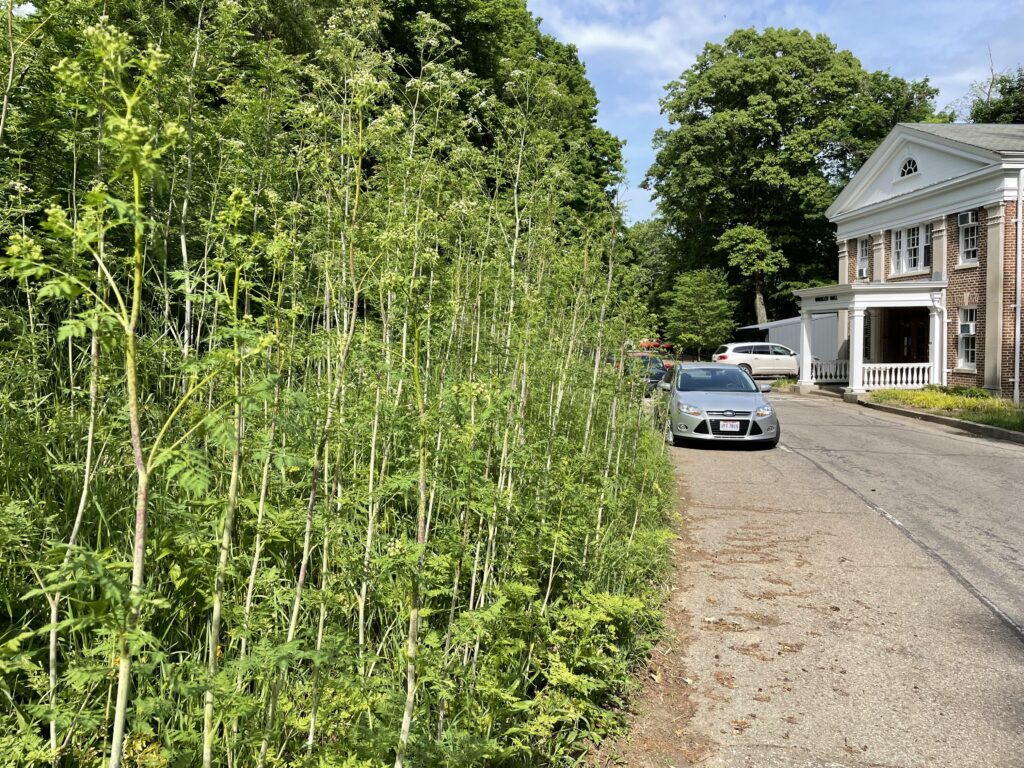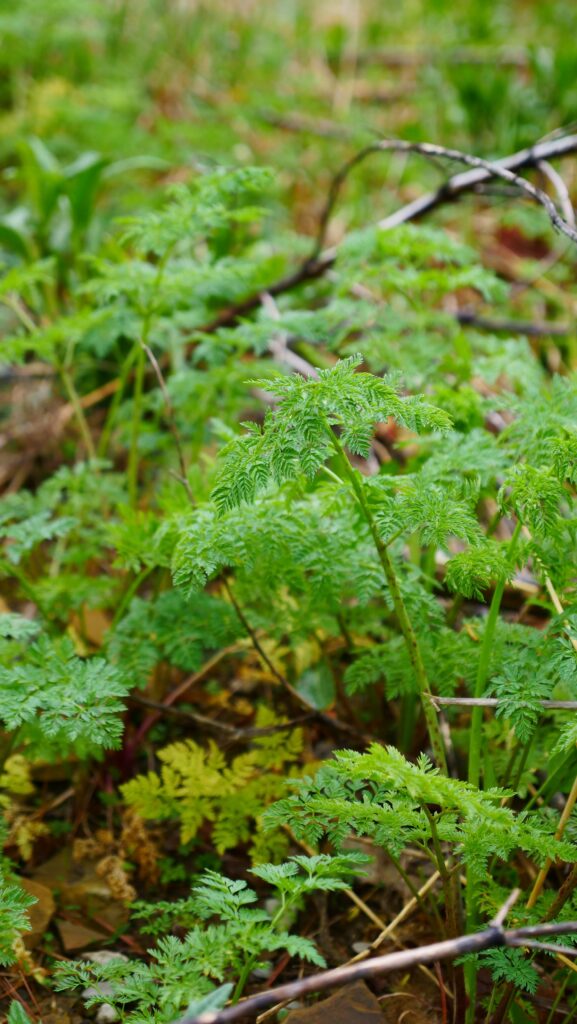The dainty plant that looks so innocent right now – a bright green, fern-like fur ball the size of a soup bowl in many cases – will soon grow into a deadly giant towering up to 10 feet tall.
So don’t let the little squirt fool you.
It’s poison hemlock, and as its name implies, it is potentially deadly. Experts say now is the time to attack it.
The noxious weed is taking hold in farm fields, in roadway ditches, along bike trails and fence lines and in yards across Ohio and beyond.
Lori Swihart, master gardener coordinator for the Ohio State University Extension Service in Licking County, said poison hemlock is easily mistaken for wild carrot tops. Some people think it looks like parsley or yarrow.
No human or animal should eat it.
“People see that and think, ‘That’s so pretty,’” Swihart said.
And pretty toxic.

Experts say it’s one of the deadliest plants in North America, and if not managed now, those little plants soon will shoot up into giant stalks taller than most humans. Then they bloom, and soon after that, they send out a shower of little seeds.
“Poison hemlock plants contain highly toxic piperidine alkaloid compounds, including coniine and gamma-coniceine, which cause respiratory failure and death in mammals,” writes Joe Boggs, of the OSU Extension Service, on the organization’s website. “It is the plant the Greeks used to kill Socrates, as well as the Greek statesmen Theramenes and Phocion. Indeed, the genus name Conium is Greek, meaning to spin or whirl, and refers to the symptoms of poison hemlock poisoning.”
The Cleveland Clinic says that poisoning can occur after ingesting even small amounts of poison hemlock.
“Alkaloids (in the plant) slowly poison your neuromuscular junctions, which send messages from your nerves to your muscle fibers,” the Clinic website says. “This poisoning can cause your breathing muscles to fail. When your breathing muscles fail, you can go into respiratory failure and die. Hemlock poisoning can also affect your gastrointestinal tract, nervous system and cardiovascular system.”
Dean Kreager, agriculture and natural resources educator in Licking County for the OSU Extension Service, said poison hemlock has become a significant problem in the past five years because of those seeds, a lack of awareness about the plant and its life cycle, and because not enough is being done by property owners and highway crews at the right time of year to root out or kill the plants before they go to seed.
After they send out their seeds in late May or June, we’re assured of thousands more plants in the coming years.

“Poison hemlock is toxic at any time in its life, whether it’s 10 feet tall or the little bushy plant,” he said. “Even the seeds are poisonous.”
He said that if the plants are present in a pasture, farm animals generally will stay away from them.
“But if the pasture is nibbled down and those are the only things left, animals might eat them,” Kreager said. “If you’re baling hay, and poison hemlock gets mixed in, it’s harder for the animals to sort it out, and that’s where it gets to be a problem.”
Swihart said that now is a good time for gardeners to dig or pull poison hemlock out by its roots. The plants are small, the ground is moist, and it’s relatively easy to remove the plants if you have a few on your property.
She cautioned, however, that anyone removing the plants should wear gloves and long sleeves, because the plant’s sap can be harmful.
The Licking County Soil and Water Conservation District says that landowners can potentially obtain some of the $52 million in federal funding Ohio received for conservation practices, including the eradication of poison hemlock and other invasive species. The funding is through the Ohio office of the Natural Resources Conservation Service, which is an arm of the U.S. Department of Agriculture.
Kreager said that managing significant numbers of plants, such as along roadways or farm fields, spring and fall are the best times to spray the plants with herbicide.
“Glyphosate will kill it,” he said, but he noted that the herbicide will kill hay and other grasses around it.
“You could use a product like 2,4-D, which will kill poison hemlock but won’t kill other plants around it. Crossbow is another brand that won’t kill grass but will kill broadleaf plants such as poison hemlock,” he said.
He cautioned that anyone applying herbicide and working around poison hemlock should wear gloves, long sleeves and protective eyewear.
Applying herbicides come with some health risks, so read product labels carefully and follow directions.
And remember that the plant is dangerous, Kreager said.
“The plant sap is where the poison is,” he said. “Some people could have an allergic reaction if it gets on their skin.”
He cautioned against mowing the plants with a string trimmer, brush hog, or other mower with a whirring blade, such as the common motorized push mowers homeowners use to cut their grass.
“Just take care so that you don’t breathe in the aerosolized sap,” Kreager said.
Alan Miller writes for TheReportingProject.org, the nonprofit news organization of Denison University’s Journalism program, which is funded by the Mellon Foundation and donations from readers.

